Trauma: Major Extremity Trauma
Article Sections
Introduction
Extremity trauma can be either blunt or penetrating, involving injuries that affect bones, muscles, vessels, and nerves. Complications include as ischemia, infection, nerve damage, and potential loss of limb function. Blunt trauma can cause fractures, soft tissue injuries, and compartment syndrome, whereas penetrating trauma may result in direct damage to vital structures such as blood vessels and nerves.
Upper extremity anatomy
Axillary, brachial, radial, and ulnar arteries (Figure 1).
Major nerves- Brachial plexus: a network of nerves (Figure 2) originating from the spinal cord (C5-T1) that provides motor and sensory innervation to the shoulder, arm, and hand. It divides into 5 major peripheral nerves: the axillary, musculocutaneous, radial, median, and ulnar nerves.
- Axillary nerve (Figure 3): innervates the deltoid and teres minor muscles, allowing shoulder abduction and external rotation. Provides sensation to the skin over the lateral shoulder (
Continue Learning with UWorld
Get the full Trauma: Major Extremity Trauma article plus rich visuals, real-world cases, and in-depth insights from medical experts, all available through the UWorld Medical Library.
Figures
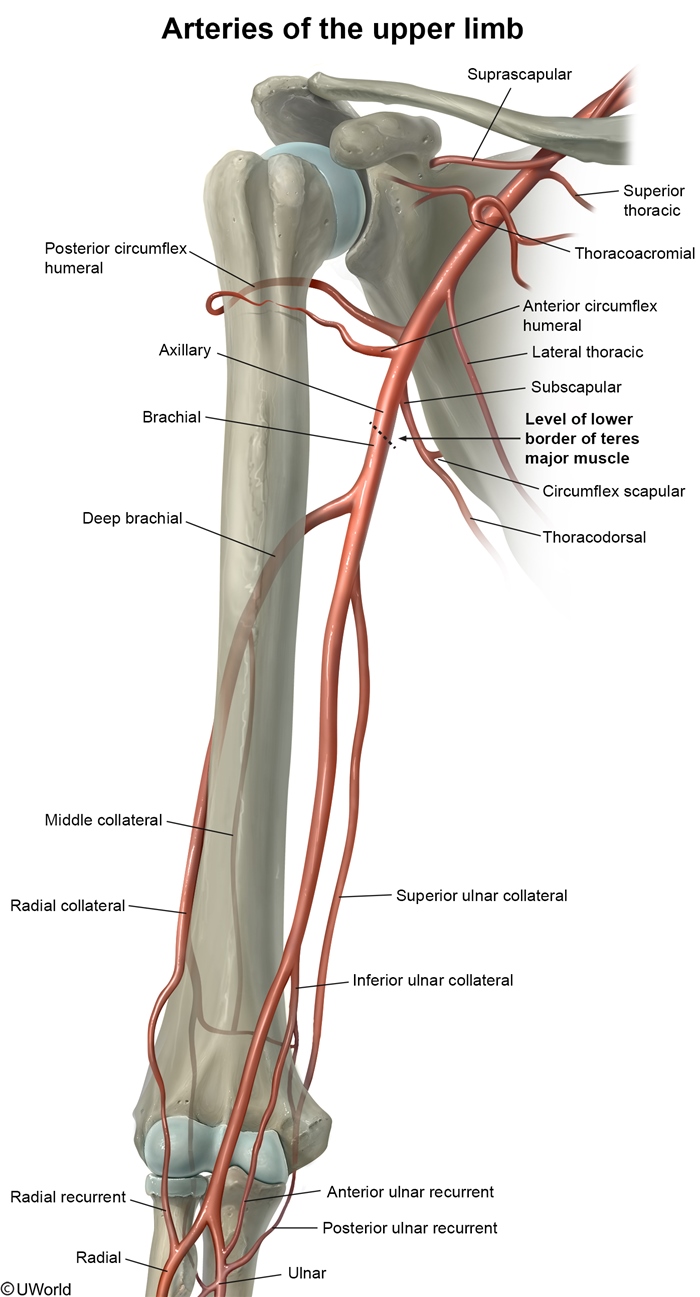
Figure 1
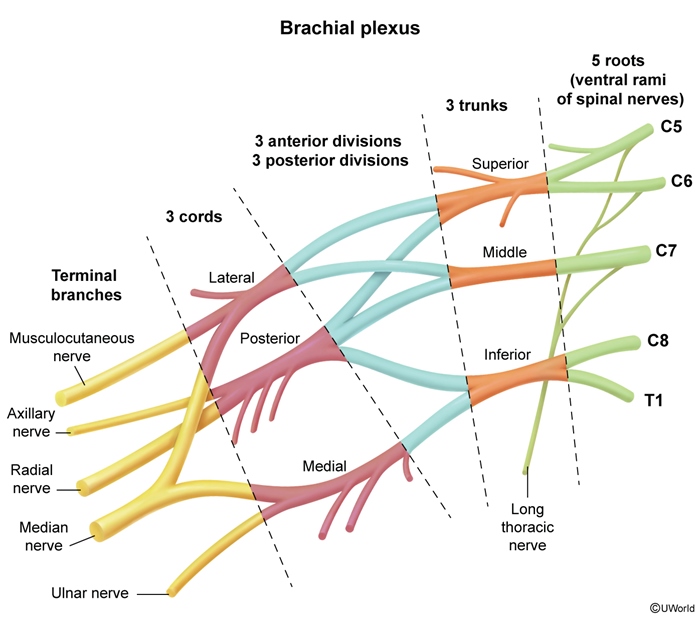
Figure 2
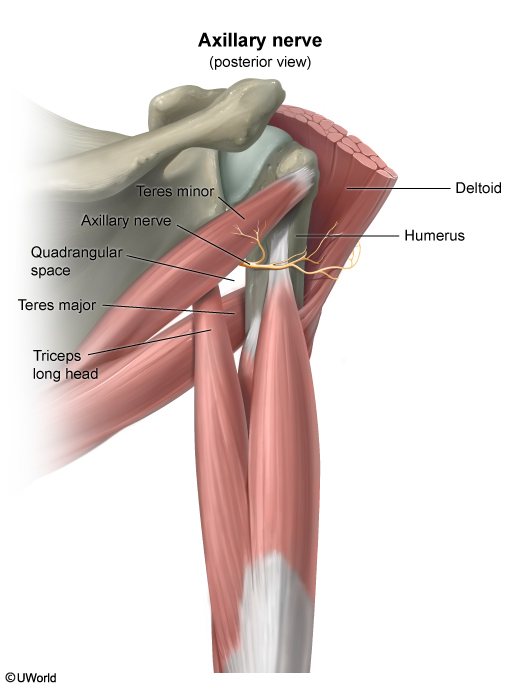
Figure 3
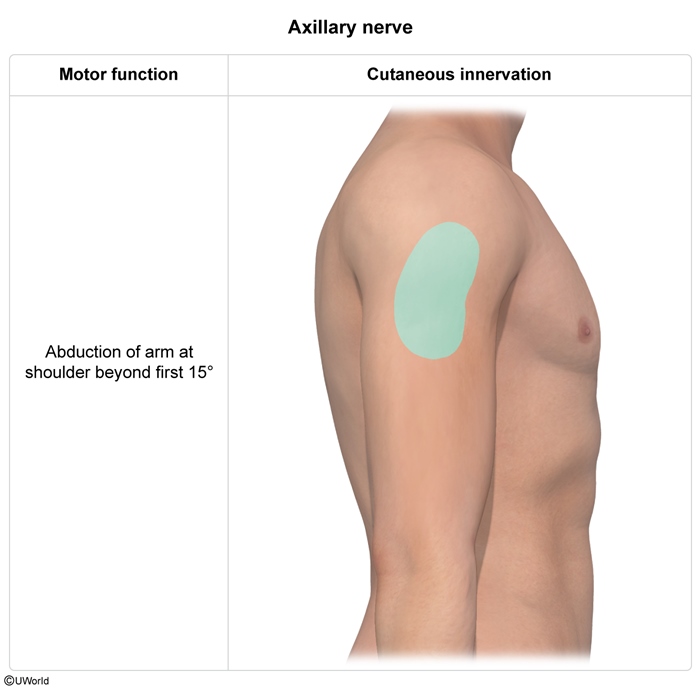
Figure 4

Figure 5
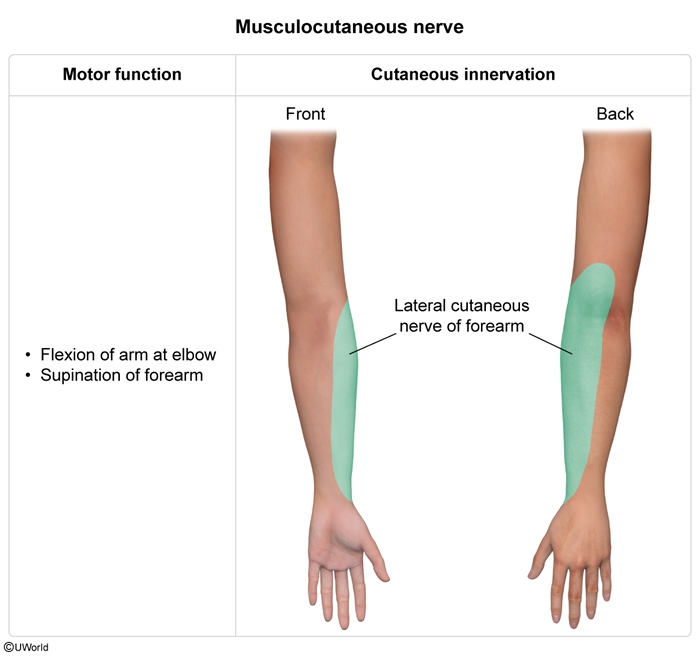
Figure 6